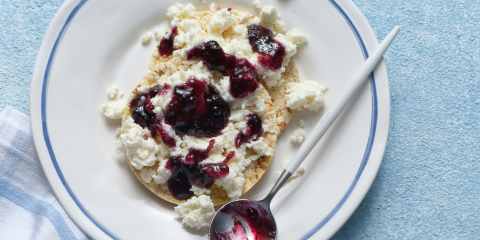Calcium: The Mighty Mineral!

The majority of women are not getting enough calcium in the diet. The importance of calcium goes beyond strong bones which are important to prevent osteoporosis. Calcium also helps the active woman by helping muscle contractions, regulating the heart rate and blood clotting or helping the bleeding stop if we cut ourselves. On top of this calcium helps the body work optimally by helping things called enzymes and the nervous system work at their best.
So how much does a woman need?
If you are between 13-18 years you need 3.5 servings of calcium
Between 18-50 years women need 2.5 servings a day
If you are 51 and over the serving required increases to 4 servings a day. This is because of the process of menopause and the increase likelihood of developing osteoporosis as the hormones change in a woman’s body.
What makes up a serving?
- 7 oz (200g) of yoghurt (be aware most tubs bought in the supermarket do not equal 7 oz). Make sure you read how much is in a tub!
- 250ml of milk
- Hard cheese like cheddar a serving is two 1.4 oz size or two matchbox sizes.
- Ricotta is less energy dense than harder cheese so a serving for this is half a cup.
Both cheddar and ricotta are perfect topping on a Corn Thins slice with some sliced tomato and cucumber and a sprinkle of chilli flakes, perfection!
- Half a cup of evaporated milk
If you are over 2 years of age the Australian Guide to Healthy Eating Recommends low to no fat types of cheese, yoghurt, milk or soy products. This is largely because 2/3rds of the adult population are either overweight or obese and we still need calcium for health but by minimising the energy density of the milk this assists in a healthy weight.
What is low fat? Low fat is less or equal to 3g fat per 100g food or 1.5ml per 100ml of liquid or drink.
What if you are lactose intolerant or vegan?
Options can include:
- Fortified soy, rice or other cereal drinks. Look for fortified (or added calcium) of at least 100g per 100ml. You can find this usually on the right side of the panel of a carton
- Salmon with bones (include the bones as this is the part with the calcium)
- 7.1 oz Sardines
- 3.5 oz firm Tofu
Sliced baked tofu, sardines and salmon (not all at once) work as great toppings to a Corn Thins slice. Adding some avocado, tomatoes, cucumber, tahini, hummus or baby spinach pairs perfectly with these proteins.
- 3.5 oz almonds (almonds are about 1g each and very energy dense, so be mindful when choosing this option)
Unfortunately, absorbing the calcium in the body is not as simple as eating or drinking it. The calcium will not be absorbed well when combined in the meal with caffeine, or with foods which contain phytates found mostly in nuts, seeds, beans and grains and oxalates found in large amounts in spinach and beet greens.
In addition to these, the body needs enough Vitamin D to take in the calcium in the body. Osteoporosis Australia recommends 5-10 minutes of sun exposure for moderately fair skin or 15-60 minutes for darker skin before 10am or after 2pm. It can be the hands forearms and face only and doesn’t need to be the whole body exposed.
Take home message: Look after your body, help it function optimally and include calcium as part of your diet.
References
1. Council NHaMR. Nutritient Reference Values Australia and New Zealand Australia: Commonwealth of Australia; 2005 [cited 2015 8/8/2015]. Available from: https://www.nrv.gov.au/nutrients/vitamin-d.
2. Australia O. Vitamin D Australia: Oesteoporosis Australia; 2014 [updated 2014; cited 2015 10/8/2015]. Available from: http://www.osteoporosis.org.au/.
3. Australian guide to healthy eating. Journal of the Home Economics Institute of Australia. 2013;20(1):7. https://www.nrv.gov.au/nutrients/calcium
4. Council NHaMR. Nutritient Reference Values Australia and New Zealand Australia: Commonwealth of Australia; 2005 [cited 2015 8/8/2015]. Available from: https://www.nrv.gov.au/nutrients/calcium.